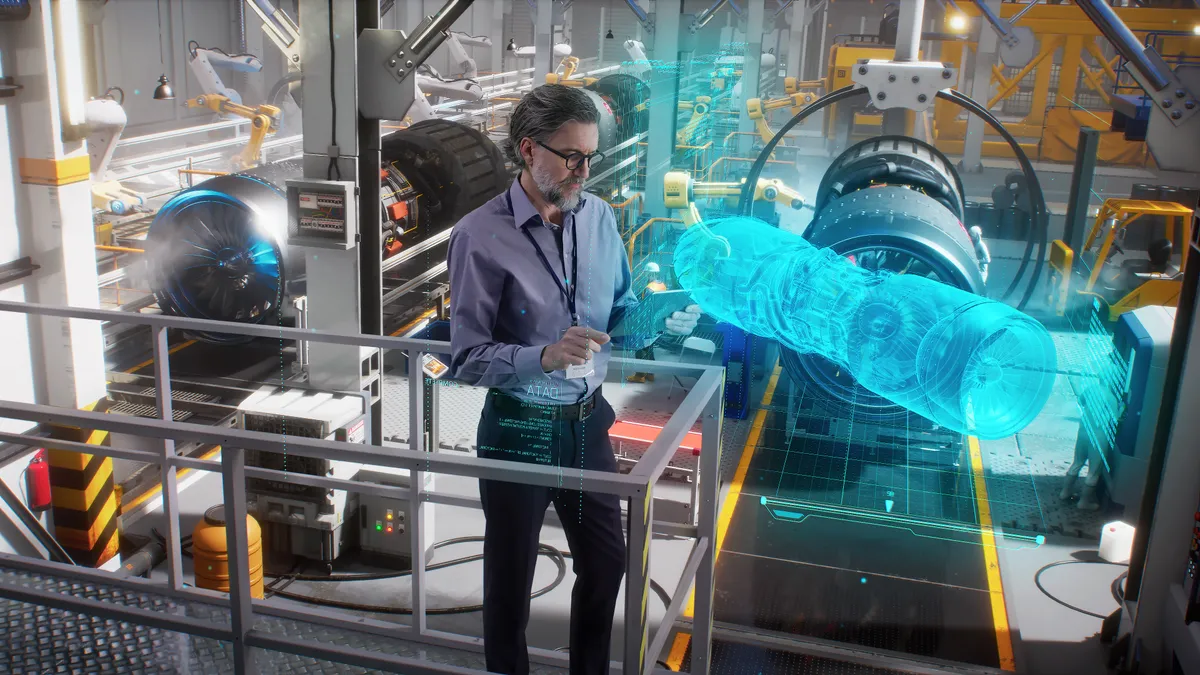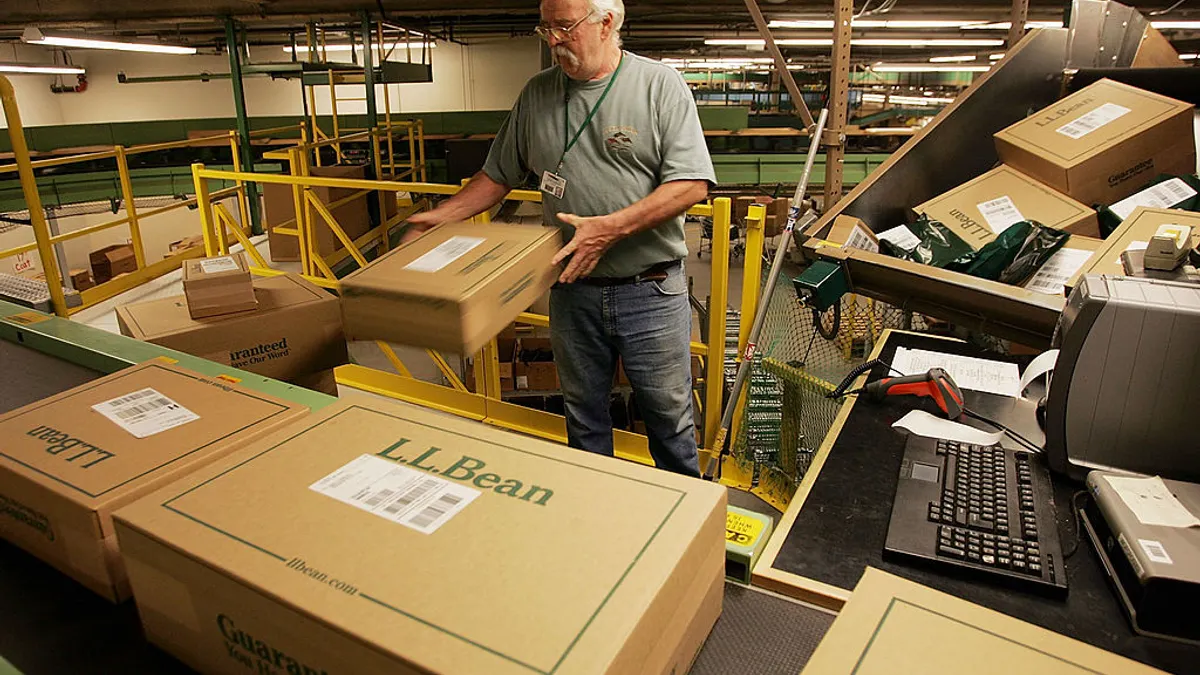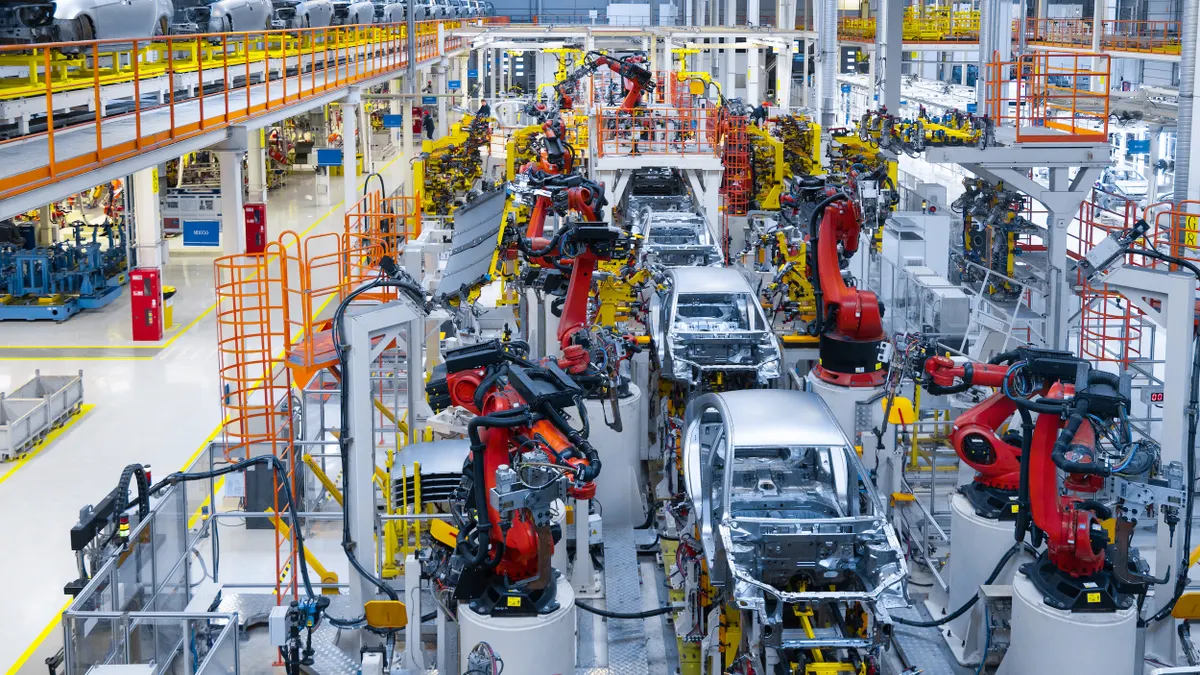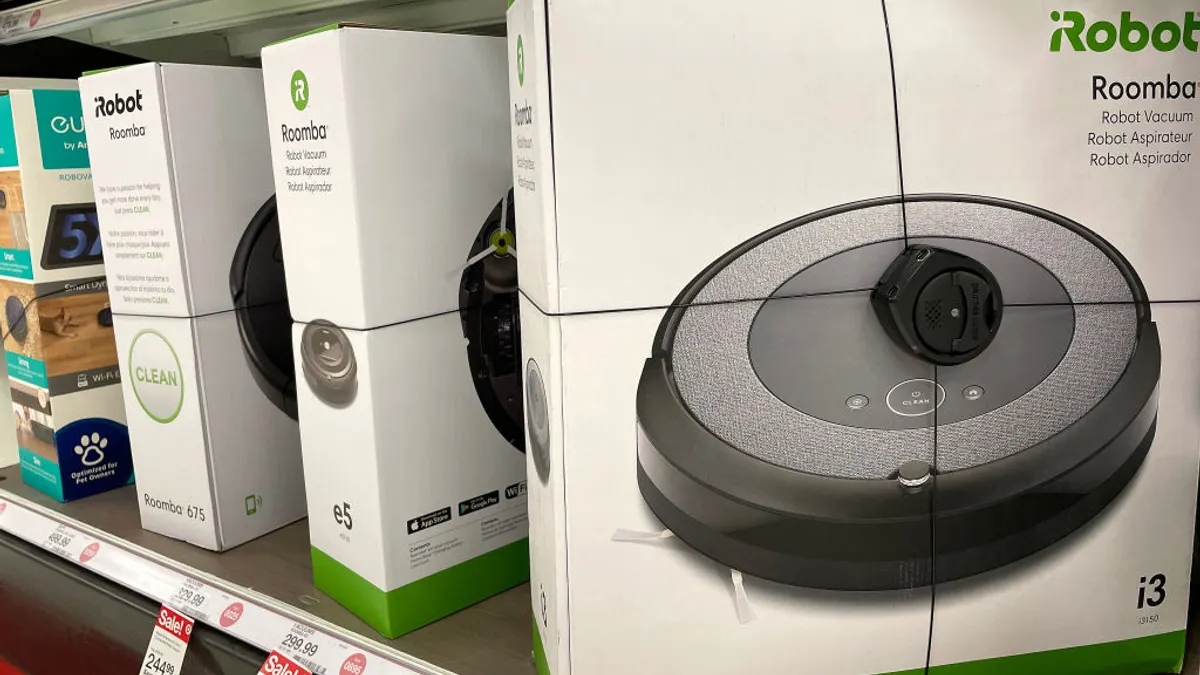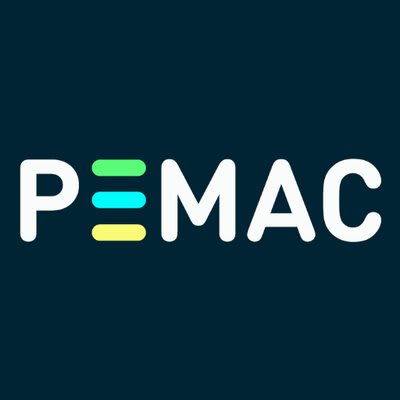Many of the world's biggest tech companies are getting involved in the semiconductor manufacturing to improve the production process, enhancing speed, accuracy and data integration.
Germany-based tech conglomerate Siemens is bringing its industry knowledge to the intersection of digital twins and semiconductors, developing hardware and software solutions that work with chipmakers from design ideation through to the final manufacturing process. This includes work with both semiconductor manufacturers, as well as chip equipment makers.
Alan Porter, vice president of electronics and semiconductor industry strategy at Siemens Digital Industries Software, spoke with Manufacturing Dive about how the company is using digital twins to enhance semiconductor production processes and push the industry forward.
Editor’s note: This interview has been edited for length and clarity.

MANUFACTURING DIVE: What are some of the ways Siemens is using digital twin technology to enhance semiconductor production?
PORTER: When it comes to semiconductors and we think about smart manufacturing, using technologies, advanced technologies that we provide, we can really drive digitally the planning and scheduling, mechanical and thermal stress manual management, also assembly manufacturing and planning.
And we can also drive assembly data analytics, site qualification, assembly process and operations, even advanced package manufacturing, closed loop quality, work-in-process management, and lock dispatch, manufacturing execution of the recipe and also traceability.
We have technologies that can drive all those different aspects that are important to the manufacturing process of the semiconductor. And we can do it in a smart digital way by managing the data and by processing the data and analyzing it.
The other important aspect of it is providing the traceability around that information, that data, that IP and metadata, and having that traceability be secure and also understanding and making sure that we have data provenance.
When you think about the security aspects of this, you want to make sure that you have a digital footprint of your [integrated circuits] . . . You can go back as far as raw materials. You want to know where your materials came from. You want to know if they've come from the right sources or if they've been corrupted, that they come from socially acceptable sources, that you can trace your sustainability metrics, all those things come into play.
Why has Siemens chosen to prioritize digital twin research and development, what does it see as valuable in the tool?
PORTER: The reason why Siemens is interested in this is because we see it as a challenge both internally and externally. We have our own factories, so we have experience in the large amount of data that's involved with the twin digital twin methodology and being able to process that and optimize that. And we see our customers having those same issues in their digital transformation journey.
What are the difficulties in having a manual versus digital system and how you're helping semiconductor teams progress into the digital realm?
PORTER: In today's world, our customers, the semiconductor manufacturers, need to be able to be more nimble. They need to be able to change up their floors, their capabilities, because the [integrated circuits] are being designed and manufactured at a much more rapid pace. They need to make sure that they have zero defects.
The more manual processes you have, the more you slow down things and the more you have areas where you can introduce errors or quality problems. So each step you take to alleviate that in a digital sense, both by transferring information digitally and also, by analyzing it, you're really optimizing for those things.
How does the industrial metaverse interact with digital twins and the work that Siemens is doing?
PORTER: The metaverse is providing a platform where you can tie into more technologies in the ecosystem. Perhaps [if] you want to do visualization at a different level so you can interact with platforms that provide additional visualization capabilities. You want to be able to monitor things [in] real time throughout the world, both visually and from a metric standpoint.
And also in terms of interoperability and user interfaces, leveraging the metaverse allows you to utilize augmented reality and other other types of AR-VR applications to be able to do functions that previously you could only do with a physical presence.
What are some other ways you'd like to see semiconductors and digital twins to advance chip production moving forward?
PORTER: As we work with the digital twins in the semiconductor space, we're looking to be able to optimize our semiconductors from the standpoint of power utilization, density, materials, because the world is consuming more and more data and it's becoming more and more connected. And that's requiring semiconductors to reach different boundaries from a physical aspect.
Also the aspects of how much data can be processed, how much memory is available, just even AI itself, has been pushing those limits and then when you take autonomy into the equation and you're dealing with semiconductors using sensors, you know improvements in that space are increasing exponentially.
And without this visualization, without this digital twin, you're in a world where you just can't handle things manually and you're not going to get the throughput you need to advance.


